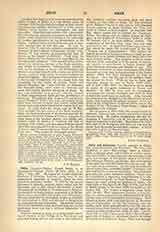

Felix and Adauctus, SAINTS, martyrs at Rome, 303, under Diocletian and Maximian. The Acts, first published in Ado’s Martyrology, relate as follows: Felix, a Roman priest, and brother of another priest, also named Felix, being ordered to offer sacrifice to the gods, was brought by the prefect Dracus to the temples of Serapis, Mercury, and Diana. But at the prayer of the saint the idols fell shattered to the ground. He was then led to execution. On the way an unknown person joined them, professed himself a Christian, and also received the crown of martyrdom. The Christians gave him the name Adauctus. These Acts are considered a legendary embellishment of a misunderstood inscription by Pope Damasus. A Dracus cannot be found among the prefects of Rome; the other Felix of the legend is St. Felix of Nola; and Felix of Monte Pincio is the same Felix honored on the Garden Hill. The brother is imaginary (Anal. Boll., XVI, 19-29). Their veneration, however, is very old; they are commemorated in the Sacramentary of Gregory the Great and in the ancient martyrologies. Their church in Rome, built over their graves in the cemetery of Commodilla, on the Via Ostiensis, near the basilica of St. Paul, and restored by Leo III, was discovered about three hundred years ago and again unearthed in 1905 (Civil-0, Catt., 1905, II, 608). Leo IV, about 850, is said to have given their relics to Irmengard, wife of Lothair I; she placed them in the abbey of canonesses at Eschau in Alsace. They were brought to the church of St. Stephen in Vienna in 1361. The heads are claimed by Anjou and Cologne. According to the “Chronicle of Andechs” (Donauworth, 1877, p. 69), Henry, the last count, received the relics from Honorius III and brought them to the Abbey of Andechs. Their feast is kept on August 30.
FRANCIS MERSHMAN

